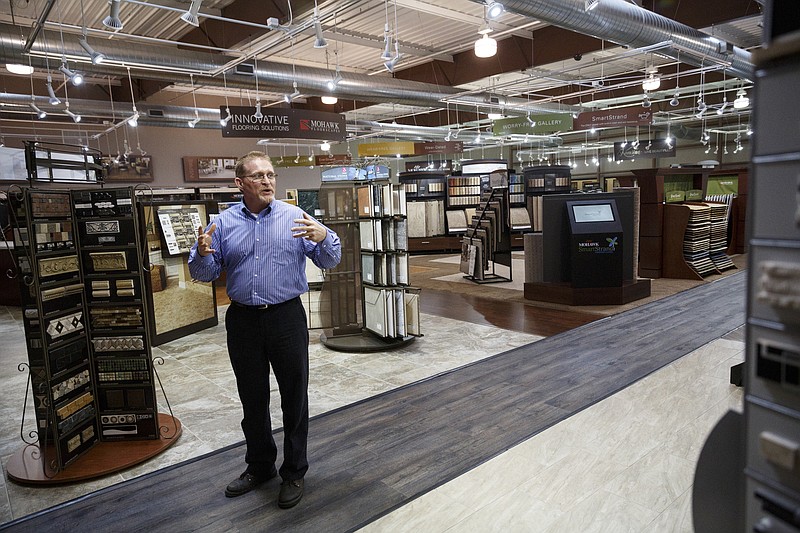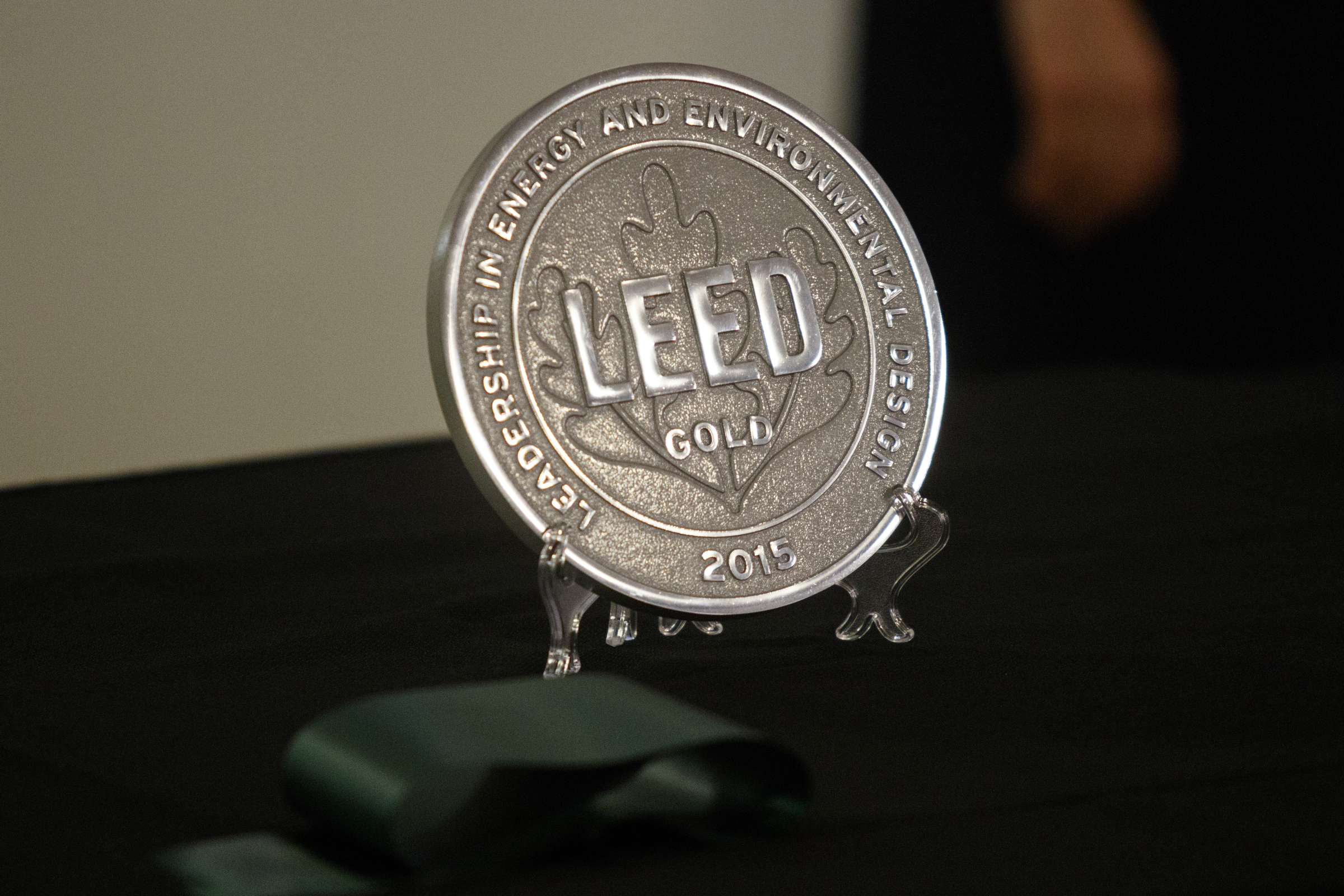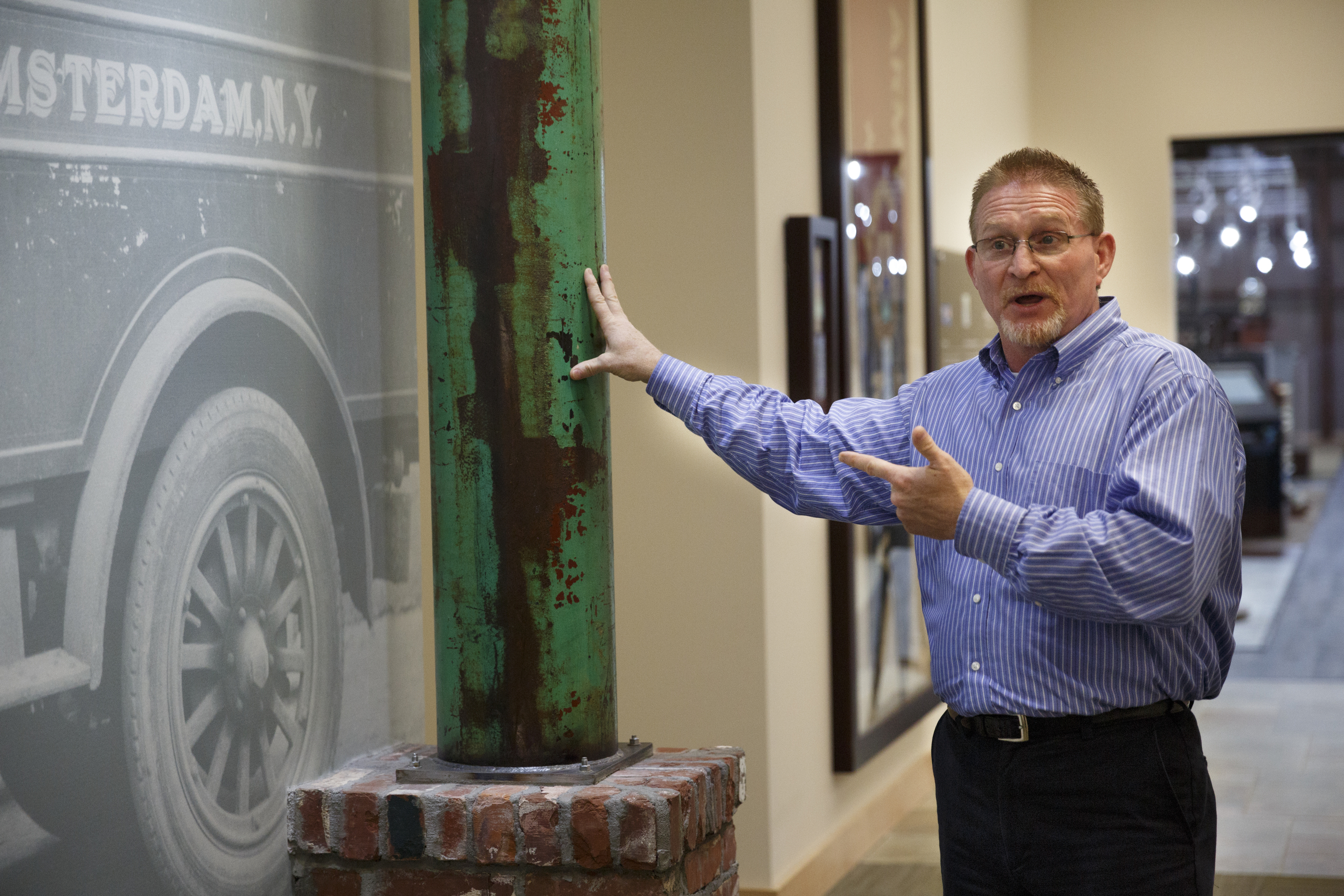CALHOUN, Ga. - Tucked away in a corner of an industrial park near Exit 312 here is a state-of-the-art, LEED-certified office space as progressive in its approach to aesthetics and sustainability as any tech start-up you'll find.
It's proof that, in the floor covering world, you can teach an old dog new tricks.
On Thursday, Mohawk Industries officials announced that its Mohawk Flooring Center building - a roughly 175,000-square-foot office and product showroom - received LEED Gold certification.
LEED, short for Leadership in Energy and Environmental Design, is a designation offered by the U.S. Green Building Council to structures which meet strict criteria for environmental friendliness. LEED-certified buildings come with energy and utility savings.
Gold is the second-highest LEED certification available.
In Mohawk's case, the world's largest flooring manufacturer chose to take a dilapidated, 1980s-era manufacturing facility in Calhoun and turn it into corporate offices, bringing more than 300 employees from offices in Marietta, Ga., and Dalton, Ga., among others, into a single, shared space near Mohawk Industries' existing Calhoun headquarters.
It was surprising news when it hit, said Rochelle Routman, vice president of sustainability.
Routman had been with Mohawk a short time when her Marietta office was slated to move to Calhoun. But when she heard about the move, she wanted the company to make the best of it, and that meant the potential rehabilitation of an old, existing Mohawk building once used as a spinning facility.
"Initially, this place looked pretty scary," she said. "It also had a weird odor to it."
She describes the facility as being not only a dreary building, but a sad and forgotten property littered with tree limbs and grown up with weeds before the remodel.
There was still even old equipment housed inside.
But rehabbing the property was a task Mohawk officials didn't shy away from.
After all, the flooring titan boasts products that help other companies achieve LEED certification, so "it only made sense that we get LEED certification for our building," said Routman.
Today, the Mohawk Flooring Center facility sits back from the road and is surrounded by natural Northwest Georgia flora, an intentional touch by landscapers. The property doubles as a Certified Wildlife Habitat, certified by the National Wildlife Federation.
And on the inside, the look and feel is "industrial cool," said Kent Thomas, manager of engineering services at Mohawk.
The ceiling of the employee break and dining room is meant to mimic old industrial buildings, with steel beams and tongue-and-groove wood planking.
Old brick, the green patina of age intentionally left for looks, is incorporated in the design. Old metal pipes, once criss-crossing the roof of the original building, are now decorative elements inside.
Mohawk also punched 16 sky lights into the roof to let in more natural light. A new product showroom gleams with LED light, and when visitors come, there's the hum of the old, industrial 1980s lights, which are turned on for nostalgia sake.
From a manufacturing perspective, "there wasn't a lot we could do with this building," said Thomas.
Also, because the structure sits in a flood way, flood plain and flood zone, building something new on the property would have involved a series of engineering obstacles. The existing building was grandfathered in, allowing Mohawk to reuse it.
Thomas is thankful the building survived and has found new life, with a new look and a new purpose.
"This building put a lot of people through college, raised a lot of families," he said.
Mohawk officials declined to say how much it cost to rehabilitate the building, but boasted that it consumes little energy and that because it has been such a successful project, the company will consider taking the same approach to other facilities in the future.
And with increasing pressure from the federal government and consumer groups on manufacturers to embrace sustainability and corporate responsibility, "it was really more about who Mohawk is - this progressive company," said Routman.
"We really need to take a stand on being a leader in sustainability," she said.
Contact Alex Green at agreen@timesfreepress.com or 423-757-6480.


